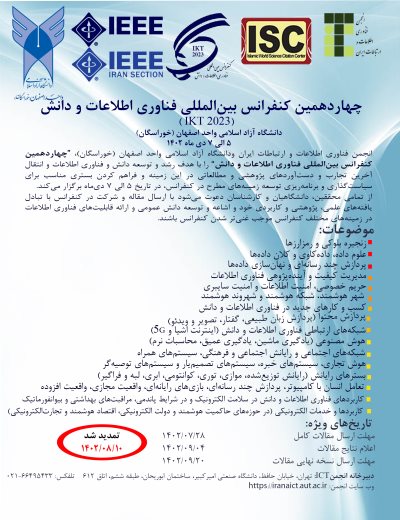0% Complete
Authors :
Keywords :
Abstract :
List of archived papers
نبیل الراشدی - رسول صادقی - وائل حسین اللامی - مهدی حمیدخانی
Masoud Alizadeh - Mohammad Soleymannejad - Behzad Moshiri
Safiyeh Samadanian - Marjan Kaedi
Alireza Akhavan safaei - Pegah Saboori - Reza Ramezani - Mohammadali Nematbakhsh
Ali Bidaran - Dr Saeed Sharifian
Alireza A.Tabatabaei - Pouria Sameti - Ali Bohlooli
Amirhossein Molazadeh - Zahra Maroufi - Mehrdad Ardebilipour
Mehrgan Malekpour - Dr Federica Caboni
میترا اکبری کهنه شهری - دکتر رضا محمدی - دکتر محمد نصیری میترا اکبری کهنه شهری - رضا محمدی - محمد نصیری -
مهسا لطیفی - جمشید مالکی




